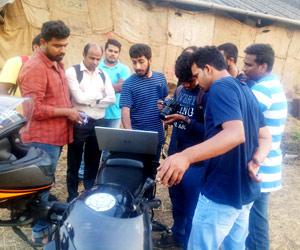Volunteers taught to collect samples scientifically for leopard data bank; move for better know-how of man-animal conflict

To understand the problem of man-animal conflict at Aarey Milk Colony, Sanjay Gandhi National Park authorities along with a Bangalore-based research team are trying to create a data bank of leopards in the area using the DNA analysis method. On Thursday, a group of researchers visited the colony and conducted a training session with local volunteers on ways to collect forensic evidence. The forest department believes that this activity can act as a crucial source of information in cracking poaching incidents as well.
Also read - Mumbai: Leopards to get red light in Aarey Milk Colony's tribal hamlets

Authorities train seven locals at Aarey
Also read - Mumbai: Another Aarey colony leopard attack on two shocks forest department
Himanshu Chhattani, research fellow with National Institute of Biological Science, gave a presentation on the subject to a group of seven local volunteers. The team was also shown the procedure and precautions to be followed while collecting forensic evidence from the spot. Volunteer, Prabhu Swami, who was part of the session, said, "We were taught how to collect samples from the scat using cotton buds, and the importance of gloves in collecting hair samples."
Also read - Mumbai: Two women left injured after Leopard attack at Aarey Colony
While the forensic sample collection of leopards will begin soon, the success rate of the technique is suspect, feel a section of experts. A wildlife researcher, requesting anonymity, said, "Due to humidity, the chances of DNA degradation are higher if the collection process of the samples is not done at the earliest. Biological contaminants such as bacteria, fungi and enzymes can increase the rate of DNA degradation. In such cases, the results aren’t reliable."
Also view - Photos: 10 unsolved murders in Mumbai
 Subscribe today by clicking the link and stay updated with the latest news!" Click here!
Subscribe today by clicking the link and stay updated with the latest news!" Click here!









